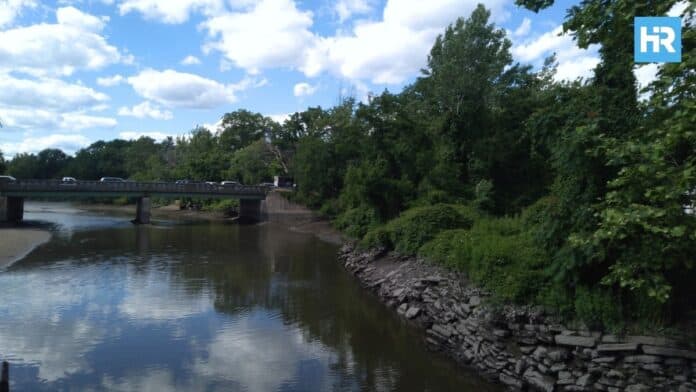The Hackensack River has been polluted for over 200 years, with harmful chemicals left behind by factories and sewage.
Now, the EPA is leading a major cleanup effort to restore the river to a safe and healthy state.
This project will take decades, cost hundreds of millions, and involve local communities every step of the way.
Here’s what you need to know about the cleanup and how you can get involved.
- Cleaning the Hackensack River will take decades and cost hundreds of millions of dollars, as it will remove toxic mud from 22 miles of river.
- Pollution from factories and sewage left harmful substances like lead, mercury, and PCBs in the river’s sediment.
- The EPA is asking local people to share ideas and join groups to help with the cleanup process.
Why the Hackensack River Needs a Cleanup
For more than 200 years, factories and sewage plants dumped waste in the Hackensack River.
Over time, this has left the mud at the bottom of the river filled with dangerous chemicals like chromium, lead, arsenic, mercury, and PCBs (polychlorinated biphenyls).
And these pollutants don’t go away on their own and can harm fish, crabs, and even people who come into contact with them.
However, the pollution is mostly in the mud, not the water itself.
And this means the river still looks fine on the surface, and activities like kayaking and boating are allowed.
Nonetheless, eating fish or crabs caught in the river is strongly discouraged because of the toxins they may carry.
The Environmental Protection Agency (EPA) named the Lower Hackensack River a Superfund site in 2022.
Thankfully, this step allows the government to clean up highly polluted areas.
The goal is to make the river safe for people and wildlife while holding polluters accountable for the mess they left behind.
How the Cleanup Will Work
As you can expect, cleaning a river as large and polluted as the Hackensack is no small task.
The EPA expects the process to take decades and cost several hundred million dollars.
As part of the overall plan, the money will come from federal funding and settlements with companies responsible for the pollution.
The cleanup has been divided into two parts, or “operable units” (OUs), to make the process more manageable:
- Operable Unit 1 (OU1): This includes the entire 22 miles of the Lower Hackensack River, from the Oradell Dam to Newark Bay.
- Operable Unit 2 (OU2): This focuses on a particularly polluted industrial section called the “Kearny Peninsula,” which covers river miles 2 to 5.5 near Kearny and Jersey City.
The First Steps in the Cleanup
The EPA’s first big focus is OU2, where pollution is especially severe.
In October 2024, five companies—Beazer East, Honeywell International, Morton International, Occidental Chemical, and PSE&G—agreed to pay $30 million for a study investigating contamination in this area.
Basically, this study will figure out the best ways to clean up the toxic mud and measure how much it is spreading to other parts of the river.
One of the main tools for cleanup will be dredging.
Dredging involves removing contaminated mud from the riverbed and safely treating or disposing of it.
And the EPA has said they will keep most of the river open for public use during the cleanup so people can still enjoy boating or paddling.
The Community’s Role
The EPA doesn’t want to handle this cleanup alone—they’re asking for help from the people who live along the river.
The agency is forming a Community Advisory Group (CAG) to gather ideas, answer questions, and share updates.
Local residents, organizations, and anyone interested in helping can join.
To get involved, you can contact the EPA directly:
- Shereen Kandil: [email protected] | (212) 637-4333
- Miriam Hunte: [email protected] | (212) 637-3731
What Led to This Cleanup?
The push to clean the Hackensack River didn’t start with the EPA.
Local environmental groups have been fighting for this for years.
The Hackensack Riverkeeper, an organization that protects the river, played a big role in getting it recognized as a Superfund site.
Their efforts finally paid off in 2022 when the EPA added the Lower Hackensack to its National Priorities List.
With this designation, the river cleanup becomes a top priority and gets the funding it needs to happen.
What’s Next for the Hackensack River?
The EPA has three main goals for the Hackensack River cleanup:
- Hold Polluters Responsible: Make sure companies that caused the pollution either clean it up themselves or pay for the work.
- Get the Community Involved: Listen to local residents and include their input in the cleanup plans.
- Restore the River for Public Use: Make the Hackensack safe for activities like kayaking, boating, and even fishing (though eating fish won’t be safe for a long time).
While the work is just beginning, the EPA is confident the Hackensack River can become a clean, vibrant part of the community again.
The process will take time, but it’s a big step toward making the river safer for people and wildlife.
Together, we can bring this river back to life!






